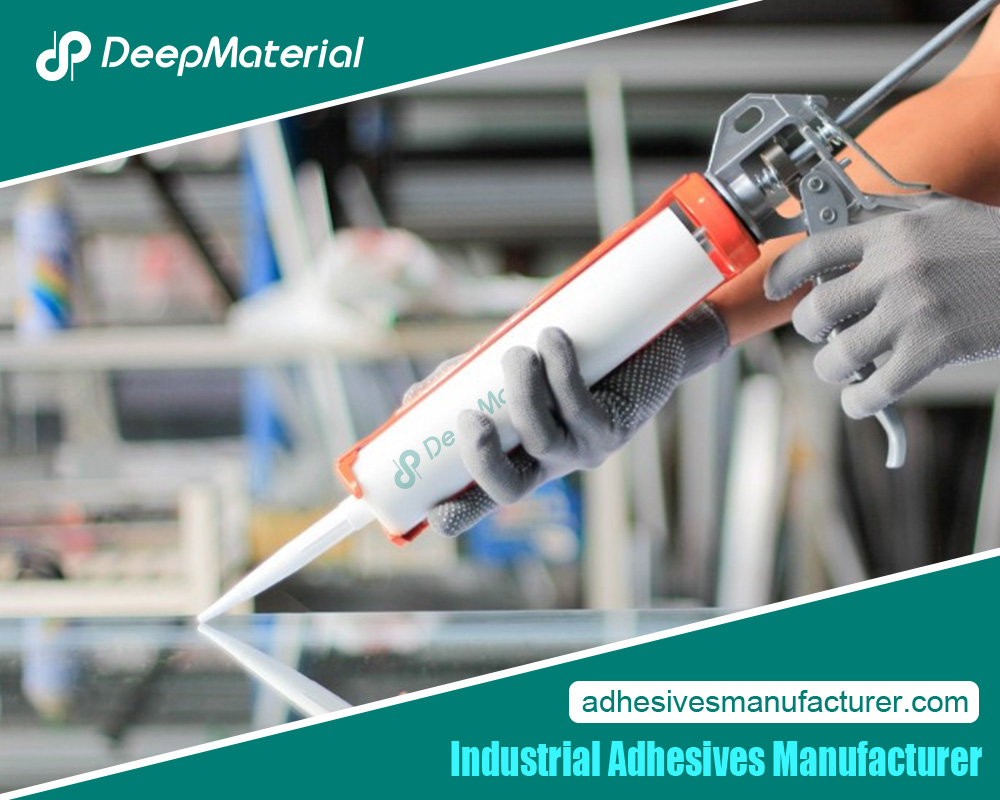Exploring the Industrial Binding Adhesive Market: A Guide to Adhesives, Applications, and Future Trends
Exploring the Industrial Binding Adhesive Market: A Guide to Adhesives, Applications, and Future Trends
In the world of manufacturing and production, the role of industrial binding adhesives is crucial. These adhesives are the unsung heroes in numerous industries, offering durable and reliable bonds that enhance the performance and longevity of products. Whether used in automotive assembly, construction, electronics, or textiles, industrial adhesives significantly improve efficiency, reduce costs, and ensure product durability. This article delves into the world of industrial binding adhesive manufacturers, exploring the different types of adhesives available, their applications across sectors, recent advancements, and the evolving landscape of this essential industry.
Understanding Industrial Binding Adhesives
Industrial binding adhesives are specialized substances used to join materials in various industrial applications. Unlike traditional methods such as welding, sewing, or mechanical fastening, adhesives provide a seamless bond with uniform stress distribution across bonded surfaces. They enable manufacturers to work with different materials, including metals, plastics, composites, and fabrics, creating lighter, stronger, and more resilient products.
Critical Types of Industrial Binding Adhesives
Manufacturers produce a range of adhesives tailored to specific industrial requirements, each with distinct characteristics. Here are some commonly used types:
- Epoxy Adhesives: Epoxy Adhesives are known for their high strength and durability. They are commonly used in heavy-duty applications where resistance to high temperatures, chemicals, and stress is essential.
- Acrylic Adhesives: These adhesives offer fast curing times and excellent bonding strength, particularly in harsh environmental conditions. They are commonly used in the automotive and construction industries.
- Polyurethane Adhesives: Polyurethane adhesives are valued for their flexibility and ability to bond a variety of materials. They are widely used in industries like construction and packaging.
- Silicone Adhesives: Renowned for their exceptional heat resistance and flexibility, silicone adhesives are often utilized in electronics and applications requiring thermal stability.
- Hot Melt Adhesives:These thermoplastic adhesives are applied in a molten state and harden upon cooling, making them ideal for applications requiring quick adhesion and flexibility, such as packaging and textiles.
Applications Across Industries
Industrial binding adhesives are pivotal in numerous sectors, each demanding specific properties to ensure solid and reliable bonds.
Automotive and Transportation
The automotive industry relies heavily on adhesives for bonding metals, plastics, and composites. Adhesives not only improve fuel efficiency by reducing the need for heavy fasteners but also enhance vehicle safety by absorbing energy during impacts. Key uses include:
- Panel Assembly: Bonding metal, plastic, and composite panels to enhance the structure and durability of the vehicle.
- Windshield Installation: Adhesives secure windshields and windows, providing strong seals against environmental elements.
- Interior Assembly:Adhesives are used in seat assembly, carpeting, and trim components, providing structural support and aesthetic appeal.
Construction and Building Materials
In construction, adhesives are essential for projects requiring solid and durable bonds in various materials like wood, glass, and concrete. Common applications include:
- Structural Glazing: Used to attach glass to buildings’ frameworks, ensuring secure and aesthetically pleasing facades.
- Flooring Installation:Bonding vinyl, tile, or carpet to various subfloor materials, ensuring stability and longevity.
- Woodworking and Joinery: Adhesives provide strong bonds in wood furniture, cabinetry, and joinery, enhancing strength and appearance.
Electronics and Electricals
With the increasing miniaturization and complexity of electronic devices, adhesives have become indispensable in electronics manufacturing. Key uses include:
- Component Bonding:Adhesives secure delicate components on circuit boards, ensuring stability and protection.
- Heat Dissipation: Certain adhesives facilitate thermal conductivity, dissipating heat away from sensitive electronic parts.
- Waterproofing and Insulation: Adhesives help protect devices from moisture, dust, and other contaminants, extending the lifespan of electronic devices.
Packaging and Textiles
In packaging, industrial adhesives provide quick, secure bonds for lightweight and heavy-duty materials. Key applications include:
- Box Sealing and Labeling: Hot melt adhesives are often used for rapid, secure sealing of boxes, cartons, and labeling applications.
- Flexible Packaging: Adhesives play a significant role in sealing and laminating flexible packaging materials, such as pouches and bags.
- Textile Laminating: Used in creating laminated fabrics for apparel, automotive interiors, and upholstery, enhancing aesthetics and durability.
Critical Considerations for Industrial Binding Adhesive Manufacturers
Manufacturers face the challenge of producing adhesives that meet diverse industrial needs and comply with environmental regulations and safety standards. Key considerations include:
- Performance Requirements: The adhesive must withstand environmental factors like temperature, humidity, and chemical exposure.
- Material Compatibility: A strong bond requires compatibility with substrates like metal, plastic, glass, or composites.
- Curing Time: Faster curing times are often desirable to increase production speed, but specific applications may require slow-curing adhesives to ensure bond integrity.
- Environmental Impact:Manufacturers are increasingly focusing on eco-friendly adhesives, aiming to reduce the environmental impact of production and disposal.
Recent Technological Advances in Industrial Adhesives
The industrial adhesives sector has seen significant advancements driven by the demand for more sustainable and efficient solutions. Key innovations include:
- Bio-based Adhesives:In response to environmental concerns, manufacturers are developing bio-based adhesives derived from renewable sources, such as plant oils or proteins. These adhesives offer reduced environmental impact and support sustainable manufacturing practices.
- Low-VOC and VOC-free Adhesives:Volatile organic compounds (VOCs) are harmful emissions often found in traditional adhesives. Low-VOC and VOC-free alternatives reduce health risks for workers and lessen the environmental footprint.
- Smart Adhesives: Innovative Adhesives are adhesives with added functionalities, such as self-healing properties or the ability to change color based on environmental conditions, providing creative solutions for various applications.
- Advanced Dispensing Systems:Technological improvements in dispensing systems have led to precise and efficient adhesive applications, reducing waste and ensuring consistency in production.
The Growing Market Demand for Industrial Binding Adhesives
The demand for industrial binding adhesives continues to grow, fueled by expansion in key industries and increasing adoption of adhesive solutions over traditional joining methods. Key factors driving growth include:
- Automotive Lightweighting: The shift towards lightweight materials in automotive manufacturing drives demand for adhesives that can effectively bond diverse substrates.
- Infrastructure Development: Growing construction projects and infrastructure investments in emerging economies stimulate demand for construction adhesives.
- Electronics Industry Growth: The rise of consumer electronics, wearable devices, and electric vehicles propels the demand for advanced adhesives with specific properties like heat resistance and flexibility.
- Packaging Innovations: The shift to flexible, sustainable packaging in the consumer goods sector boosts demand for specialized adhesives suitable for laminating and sealing.
Future Trends in the Industrial Binding Adhesive Market
The industrial adhesives market is evolving rapidly, with manufacturers investing in research and development to meet emerging demands and regulatory standards. Notable trends include:
- Increased Focus on Sustainability: Eco-friendly adhesives will continue to gain traction as manufacturers prioritize sustainable production methods and reduce reliance on petroleum-based materials.
- Rising Automation and Robotics in Adhesive Application: Automation in adhesive dispensing is expected to grow, particularly in sectors like automotive and electronics, where precision and speed are crucial.
- Growth of Hybrid Adhesives: Hybrid adhesives combine the best features of different adhesive types to offer versatile bonding solutions that meet various performance requirements across industries.
- Expansion in Emerging Markets: As industries like construction and automotive grow in emerging economies, demand for cost-effective and reliable adhesives is anticipated to increase.
Conclusion
Industrial binding adhesive manufacturers are essential in today’s fast-paced manufacturing landscape, providing solutions that enable efficient, durable, and innovative production processes. With a wide array of adhesives available, manufacturers continue to expand the scope of applications across diverse industries. As market demands evolve and sustainability becomes a top priority, the sector is witnessing groundbreaking advancements and trends that promise a dynamic future. Industrial adhesives are no longer just alternatives to traditional joining methods. They are becoming integral to product design and engineering, ensuring strength, efficiency, and sustainability in modern manufacturing.
For more about exploring the industrial binding adhesive market: a guide to adhesives, applications, and future trends, you can pay a visit to Deepmaterial at https://www.adhesivesmanufacturer.com/ for more info.














